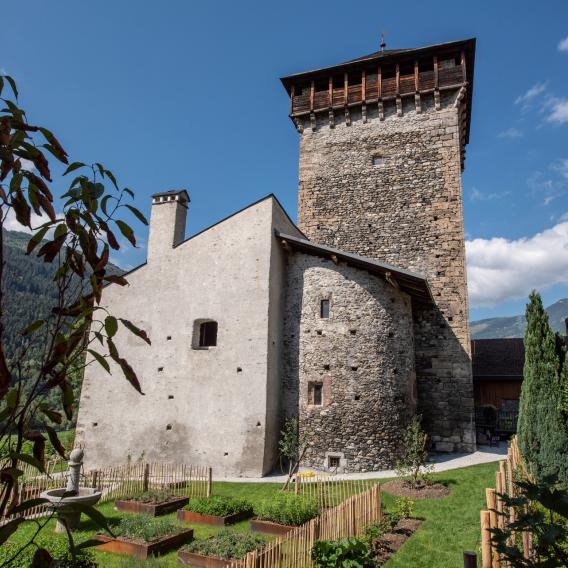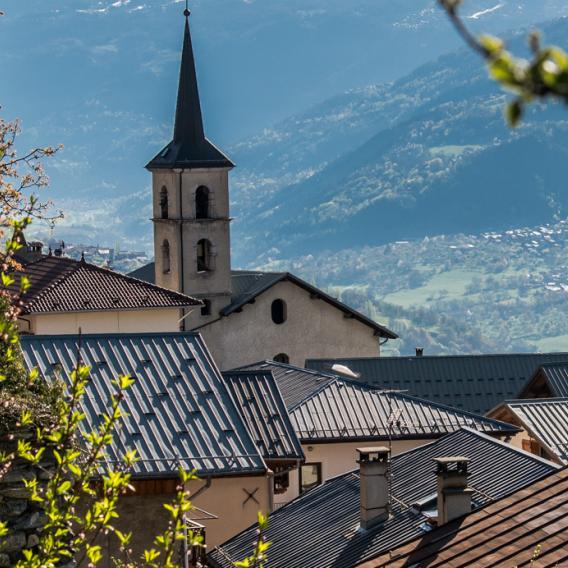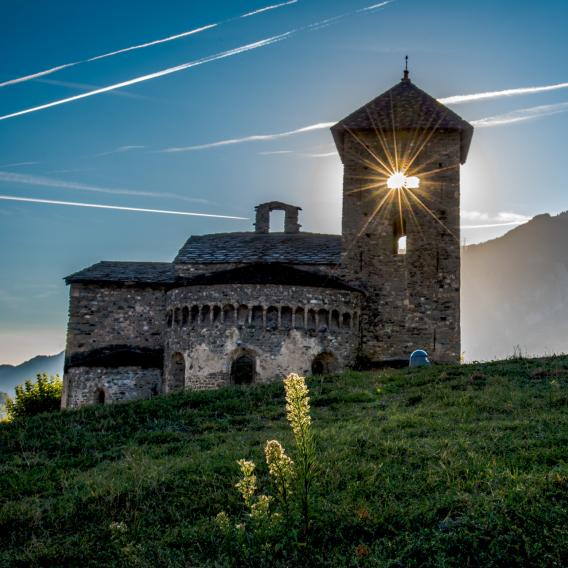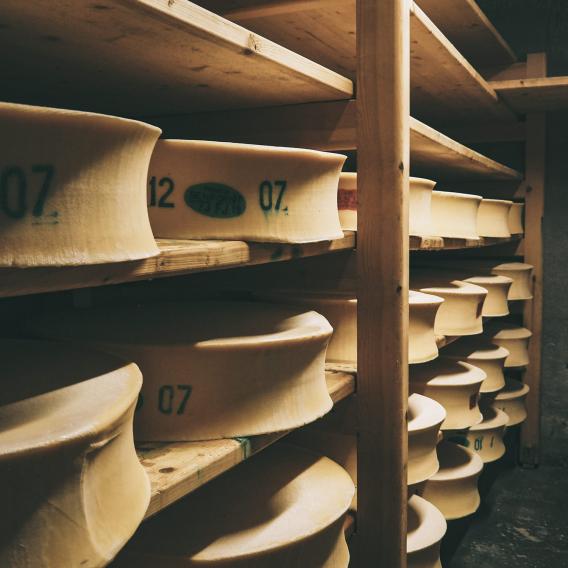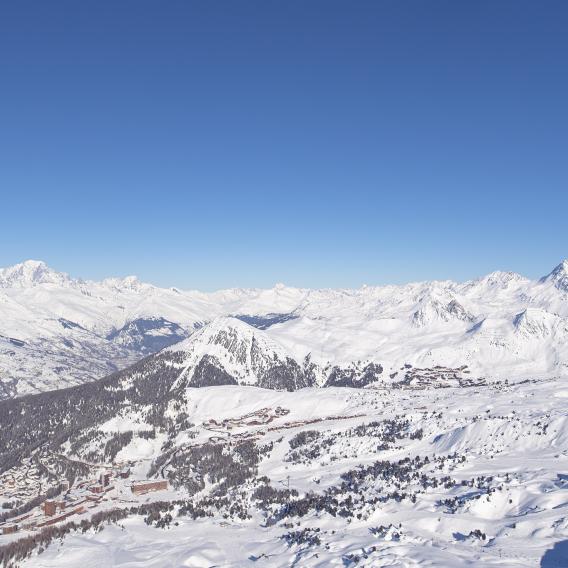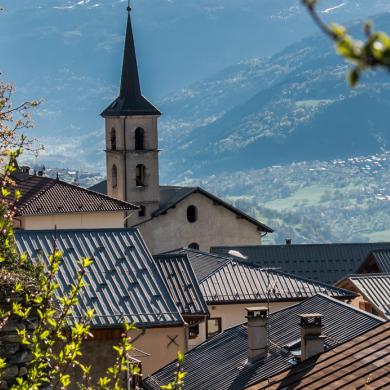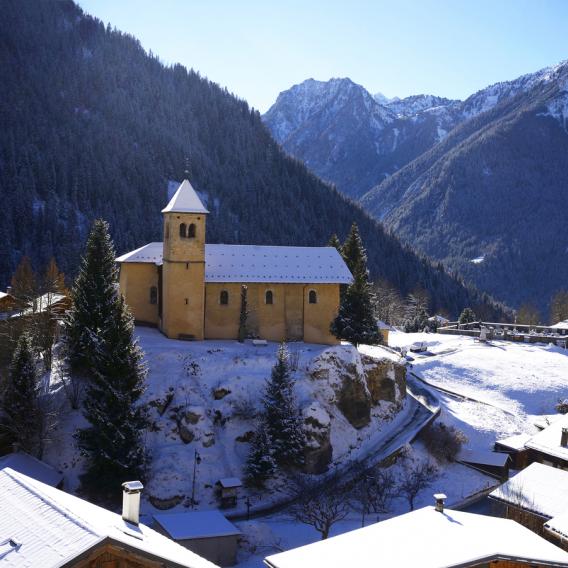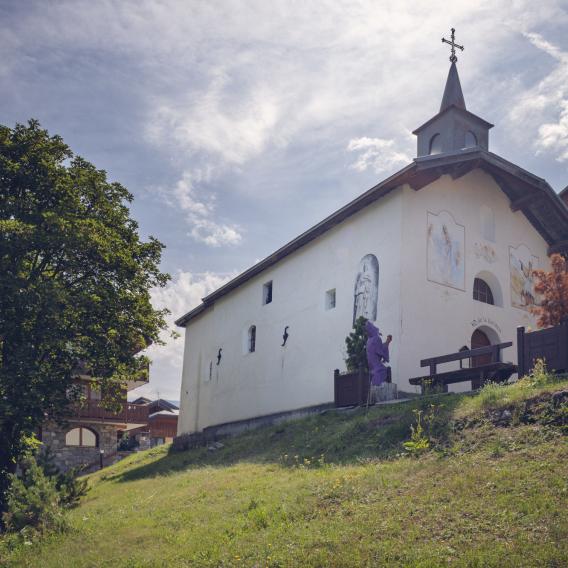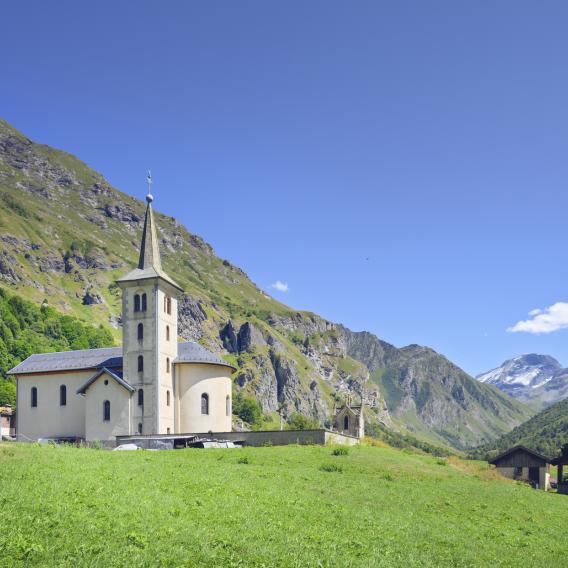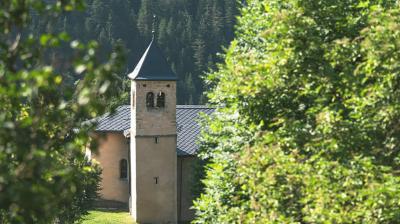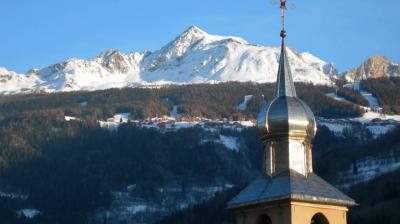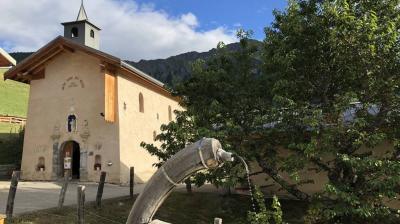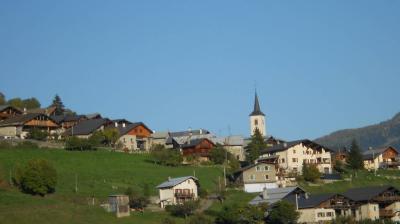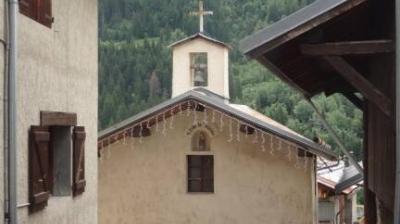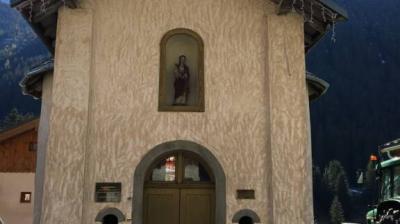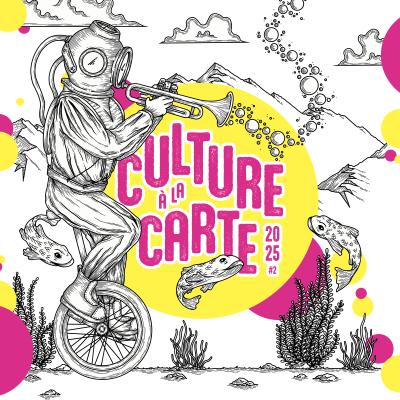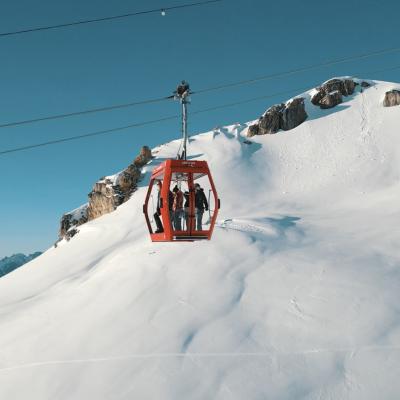Remarkable sites
In the heart of the Tarentaise valley, the Savoyard villages are home to a remarkable heritage, with a number of sites that bear witness to its rich history. They invite you on an amazing journey through the past, all the way back to Neolithic times.
On La Plagne Vallée side
The Pierre Borrione Archeological Museum is in the upper part of the town, in what used to be the main church in Aime. The museum exhibits objects that bear witness to the first human occupation of the Tarentaise: prehistoric tools, grave goods, Gallo-Roman architecture, jewellery, ceramics, coins… It is named after its founder and patron, Pierre Borrione, a doctor and mayor of Aime, who was anxious to preserve the many vestiges from his town’s and the valley’s past. From this promontory, you can admire the view, as well as the bell tower of the parish church, built between 1675 and 1678 and dedicated to the birth of the Virgin Mary. It has all the characteristics of Baroque art. Note the 3 sundials on the south and east facades.
In La Côte d’Aime
From Montméry to Valezan
Montméry is a little village that is typical of the south-facing side of the Tarentaise valley. In the dairy you can see the large copper cauldron where the Beaufort cheese was made and the notebooks where the weight of the milk delivered was listed. Watch a film of the Beaufort being made by the last cheesemaker who worked in the dairy. When you go into the Maison de Joannès, it’s like going back to the last century, with this recreation of a house from olden times when men and beasts lived in the same building, with objects from his own childhood as well as those of his parents and grandparents. Continue on to Valezan, where the church of St François de Salles (early 18th century) has a large altarpiece which highlights a tabernacle in gilded wood.
The Heritage Museum | Plagne Centre
A rich religious heritage
Make the most of your travels around the valley of La Plagne and the surrounding villages to go into the many churches and chapels.
Above Centron, Saint-Laurent’s church watches over the village of Montgirod. It survived a fire in 1944, started by German troops. Saint-Laurent is celebrated in August every year. Before you go back down to the valley, make a detour to Villaret to visit its chapel dedicated to St. John the Baptist. At 720 m, it shelters a surprising altarpiece covered with baroque ornamentation. Take the time to discover the angel’s face that is plump on one side and skeletal on the other, or the seraphim with 3 pairs of wings. The most original chapel is in the hamlet of La Combe, on the mountainside above Villette. It is dedicated to St Guérin and has no cross. The small building with a slate roof has walls that are open on two sides. The highly original tabernacle (the stump of a larch tree decorated with stones cemented to it) encloses a small clay statue of a shepherd.
Just a few turns above Aime la Plagne, Villaroland was an important hamlet with its own chapel. With its rare medieval architecture, Saint Eustache’s chapel has remarkable frescos that were restored in the 15th century.
The Baroque Trail
The villages
In Longefoy, La Superga chapel was built on a hill in 1853. It is a scale model of the famous Superga sanctuary near Turin. Continue on to Montgésin and its chapel dedicated to Notre Dame des Neiges with rich mural paintings and an ironwork grid that dates back to 1758. A number of elements (including the altarpiece) have been restored by thirty or so volunteers. On the south-facing slope of La Plagne, come and admire St Sigismond’s church in Champagny-en-Vanoise. You can’t miss it with its leaning bell tower, set on an outcrop of gypsum as you come into the village. Inside, you can try to count the gilded cherubs on the tabernacle, there are over a hundred!


